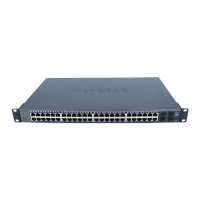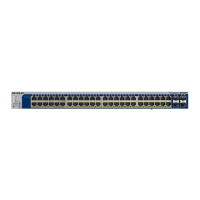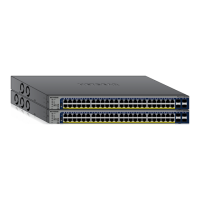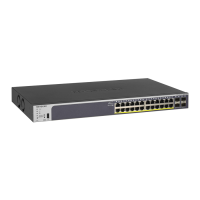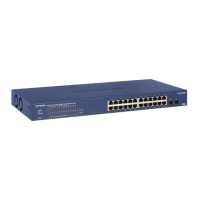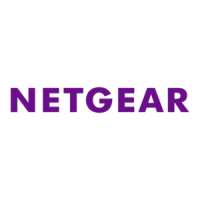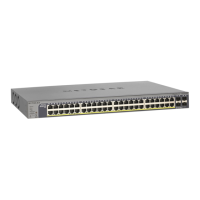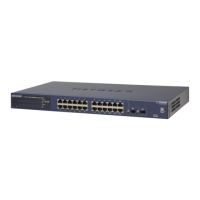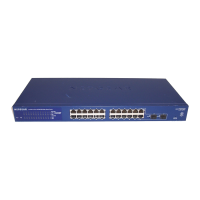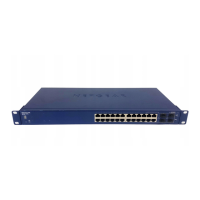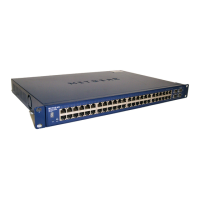

Do you have a question about the NETGEAR GS748T and is the answer not in the manual?
| Basic switching RJ-45 Ethernet ports quantity | 48 |
|---|---|
| MAC address table | 16000 entries |
| Packet buffer memory | 1.632 MB |
| Maximum data transfer rate | 1 Gbit/s |
| Latency | 20 µs |
| I/O ports | 48 RJ-45 connectors for 10BASE-T, 100BASE-TX, and 1000BASE-T (Auto Uplink on all ports) 4 SFP slots for fiber Gigabit Ethernet modules |
| Dimensions (WxDxH) | 440 x 260 x 43 mm |
| Power requirements | 100-240VAC 50/60 Hz |
| Networking features | 10BASE-T, 100BASE-TX, 1000BASE-T |
| Connectivity technology | Wired |
| Full duplex | Yes |
| Networking standards | IEEE 802.3x |
| Minimum system requirements | Category 5 network cables Network card for each PC Network software (e.g., Windows) |
| Mean time between failures (MTBF) | 69930 h |
| Safety | UL listed (UL 1950)/cUL, IEC950/EN60950 |
| LED indicators | Link, Power |
| Power consumption (typical) | 70 W |
| Storage temperature (T-T) | -10 - 70 °C |
| Operating temperature (T-T) | 0 - 40 °C |
| Operating relative humidity (H-H) | 10 - 90 % |
| Weight | 4000 g |
|---|
Details how to connect the switch to the network for remote management and IP configuration.
Configures network information for the management interface, including IP address, subnet mask, and gateway.
Allows viewing and monitoring of physical port information and configuration settings.
Divides a physical network into separate logical networks for administration, security, and management.
Configures voice VLAN settings to ensure quality of IP phone traffic by prioritizing it.
Provides a tree topology to eliminate loops in bridged networks, supporting STP, RSTP, and MSTP.
Enables routing globally and allows viewing packet information, including IP configuration.
Configures VLAN routing interfaces to enable traffic flow between different VLANs.
Allows configuration of static and default routes and viewing learned routes in the routing table.
Associates Layer 2 MAC addresses with Layer 3 IPv4 addresses for network communication using ARP.
Lets you configure switch queueing aspects and map packet priority to appropriate queues.
Supports classifying traffic into streams and providing QoS treatment based on defined per-hop behaviors.
Configures login password, RADIUS, TACACS+, and authentication lists for secure management access.
Manages HTTP/HTTPS access, Access Control Profiles, and Access Rules for secure network access.
Enables and configures port access control using 802.1X authentication for device access.
Configures MAC Filters, Storm Control, and Port Security to manage and limit network traffic.
Defines rules to authorize users and block unwanted access to network resources via ACLs.
Provides options for device reboot and resetting system configuration to factory default values.
